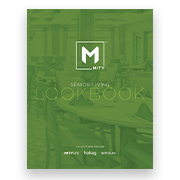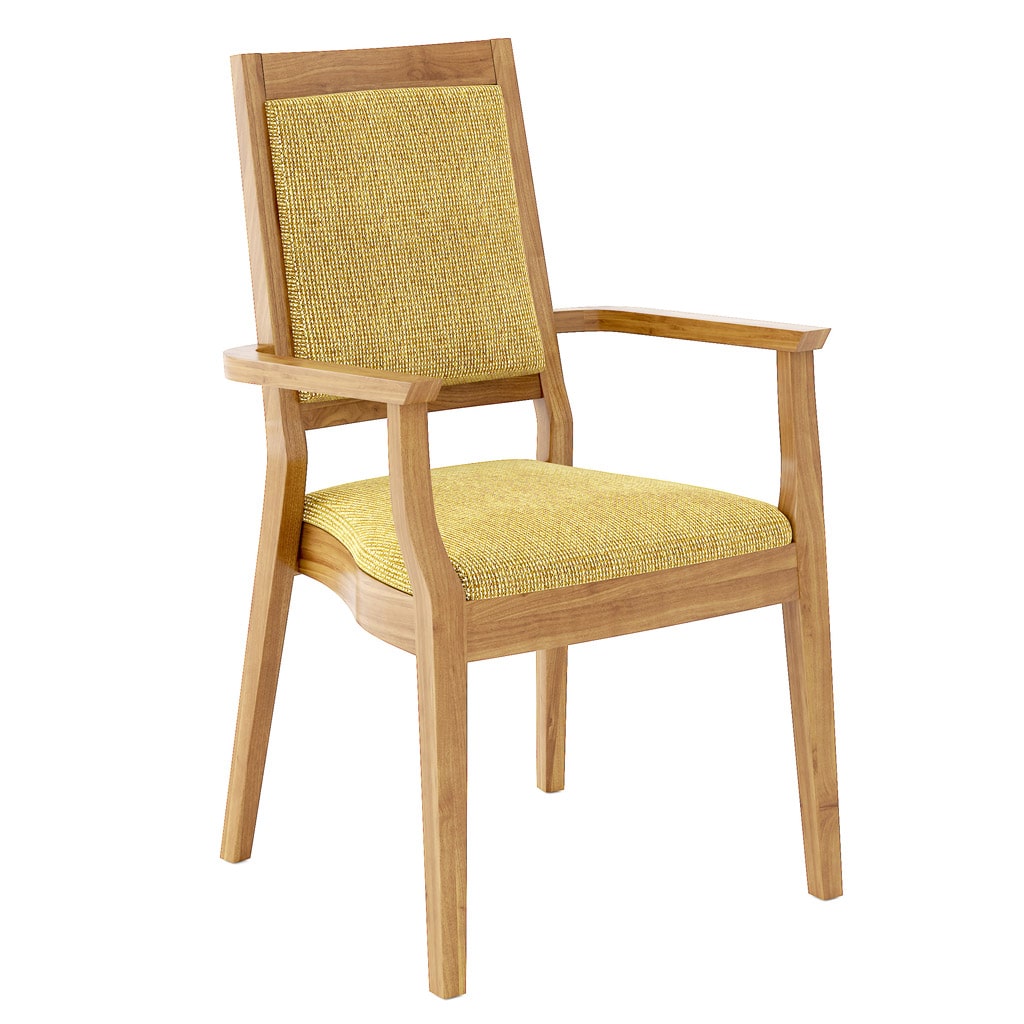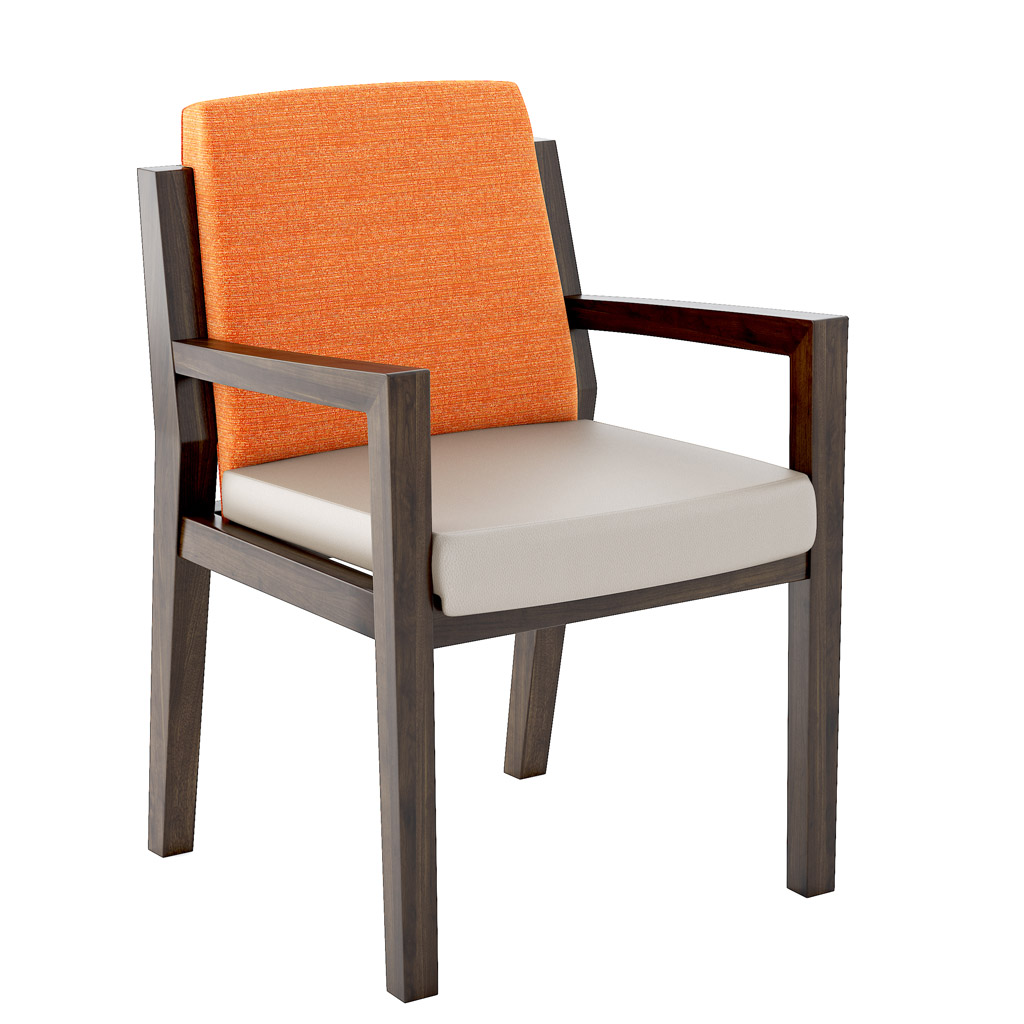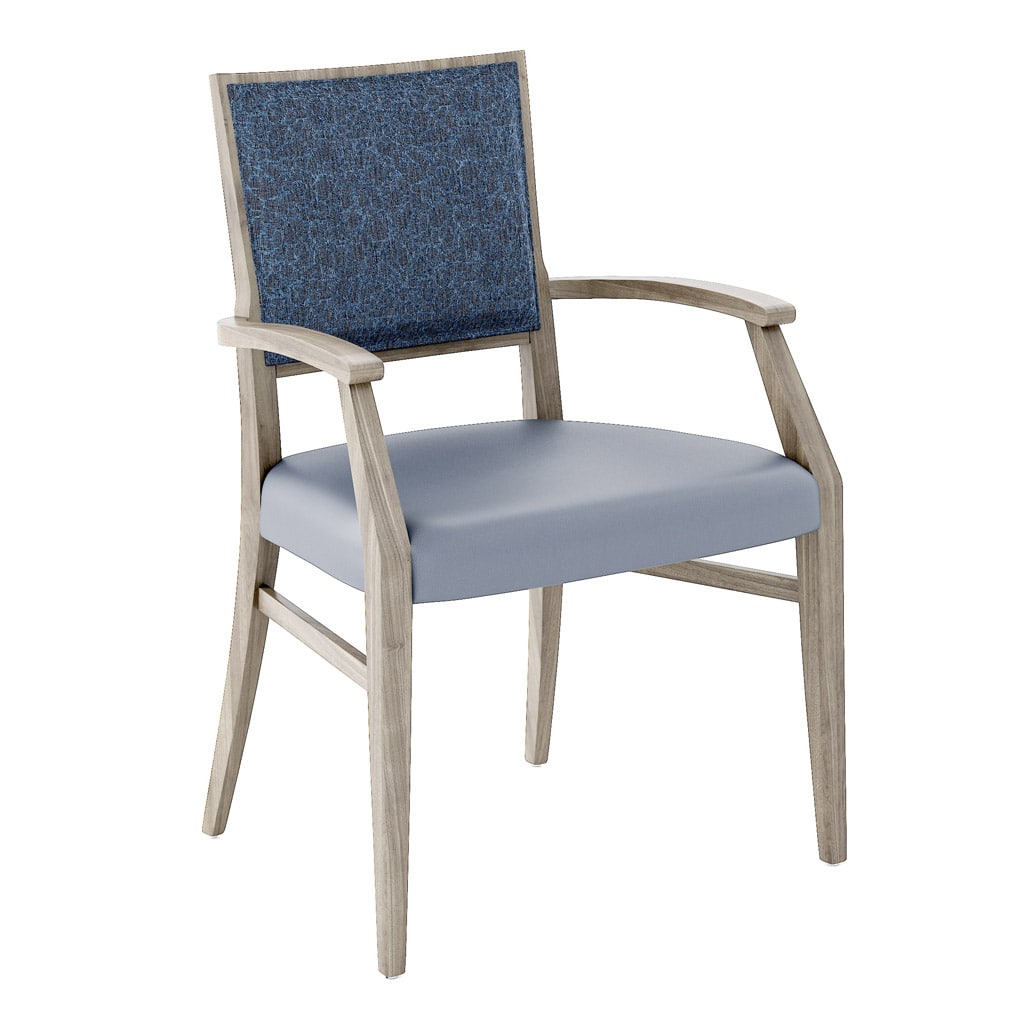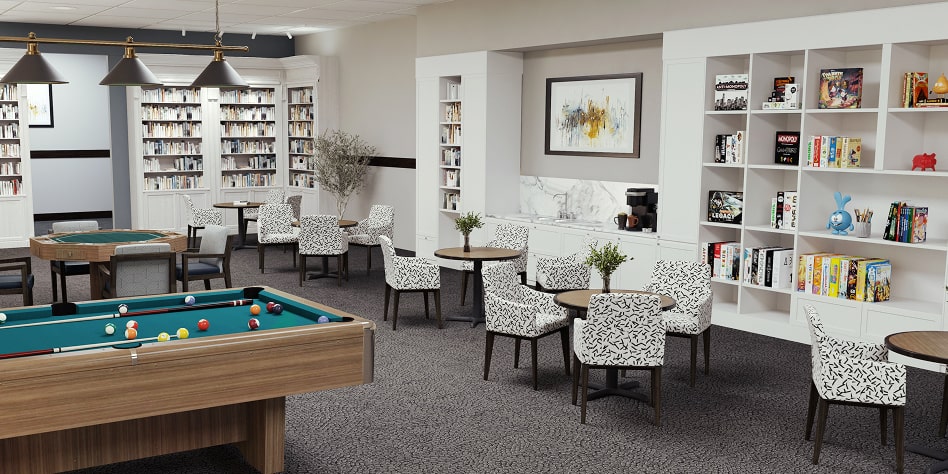
According to the US Census Bureau, all Baby Boomers (those born between 1946 and 1964) will be 65 or older by 2030. This represents a significant and continued rise in the senior population in the US, presenting an unprecedented need for senior living facilities.
This has led to a strong demand for comfortable chairs for seniors that address the older demographic’s unique physical needs.
Senior living facility managers and directors must prioritize long-term seating solutions that cater to the unique comfort and mobility needs of elderly residents. Thoughtfully chosen commercial furniture enhances residents’ quality of life by promoting safety, accessibility, and overall well-being.
Understanding the Diverse Needs of Elderly in Senior Centers
Senior residents have unique needs regarding support, comfort, and familiarity with their conditions and routines.
Physical challenges
A range of mobility issues affects the lifestyle of a significant portion of senior residents who live with conditions like arthritis, decreased muscle strength, and limited flexibility. These common conditions can make the simple acts of standing and sitting down difficult.

It requires thoughtfully and purposefully designed seating to provide these seniors with optimal support and stability while maintaining high comfort. Below, we discuss key factors in selecting senior-friendly seating, considering their physical and cognitive needs, preferences, and essential design considerations.
Cognitive considerations
The most recent national study regarding cognitive impairment in seniors found that one in 10 US adults over age 65 have dementia, with 22% experiencing mild cognitive impairment. Senior residents with cognitive decline require comfort in multiple dimensions, where consistency and familiarity are equally valuable to comfort.
Comfortable chairs for seniors with cognitive issues should have an intuitive design that is easy for them to use. When they settle into a comfortable position or use the chair for support when getting up, interacting with the chair should be instinctive.
This helps reduce the likelihood of individuals feeling confused or disoriented while seated, and allows them to gain a sense of physical confidence and security when lifting themselves up, which can help minimize the likelihood of falls.
Individual preferences
On top of the universal need for mobility and support, seniors have unique preferences regarding design aesthetics and the most comfortable features. For this reason, MityLite offers extensive customization options.
Senior living facility managers can choose from varied preferences that will please residents while maintaining the important design continuity and features that best serve every resident.
Different Areas Require Different Seating Solutions
Choosing the right seating solutions for comfort, safety, and long-term value for senior living communities also requires factoring in the context, the area in the facility the seating is designed for.
Dining areas
Comfortable dining and kitchen chairs for seniors help individuals remain well-supported for extended durations. They also need to be designed for easy spill cleanup.
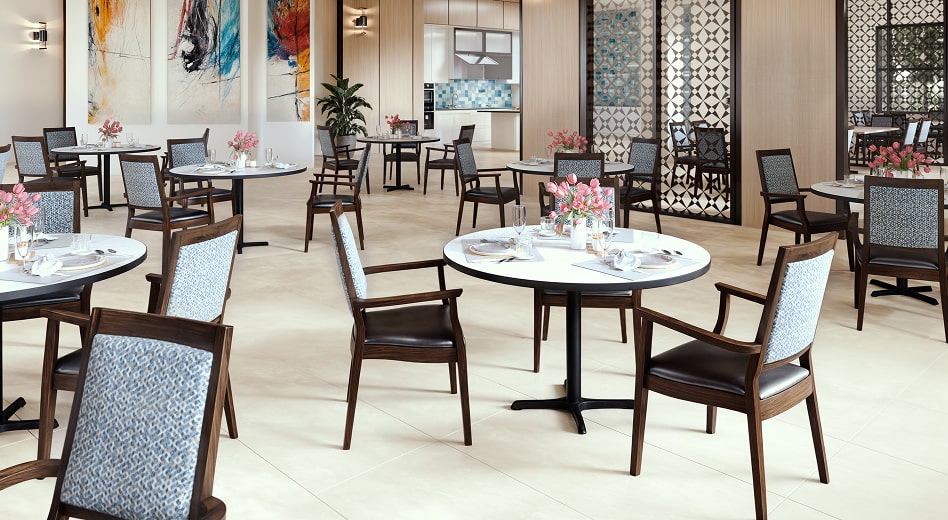
MityLite’s faux wood dining chairs factor in these requirements and are designed at the appropriate seat height (18-19 inches) for the easiest standing and sitting.
Lounge and common areas
Common areas may be used for lounging or arranged to play board games and engage in various relaxed activities. These chairs must be durable, designed for long-term reliability with years of daily use.
MityLite’s wooden chairs provide a relaxed yet elegant natural wood design that is comfortable and durable.
Activity rooms
Activity rooms demand flexible, reconfigurable seating that can easily accommodate different events. Stackable wooden and faux wood chairs can be designed to be lightweight, easy to move, and sturdy. Chairs with a stackable design maximize a facility’s storage space efficiency, so staff can easily organize events and break things down quickly.

Resident rooms
In private spaces, seating needs to feel personal, comfortable, and welcoming. Private spaces also need to make the best use of limited room space and follow all safety standards. Compact wooden chairs designed for this purpose can provide a sense of home while ensuring commercial-grade safety and longevity.
Key Considerations for Choosing Senior-Friendly Seating
Consider all of these important factors when deciding on the right seating for your facility:
- Safety and stability: Look for chairs built for long-term durability, with reinforced joints and frames that exceed commercial standards. They should also have non-slip feet to prevent unintentional movement, with frames and joints made to withstand more weight than the minimum commercial standards require.
- Comfort and ergonomics: Seating should support residents comfortably for extended sitting time, with an ergonomic design that includes proper lumbar support. Mobility-friendly chairs for seniors should feature seat heights and depths that facilitate easy sit-to-stand transitions as well.
- Cleanability and hygiene: Infection control is a top priority in senior living facilities. Sealed, non-porous surfaces help ensure consistent disinfecting procedures don’t degrade seating. Chairs should also be moisture-resistant for cleaning spills and maintaining hygiene without ruining the surface over time.
Purchase Comfortable Seating Through MityLite
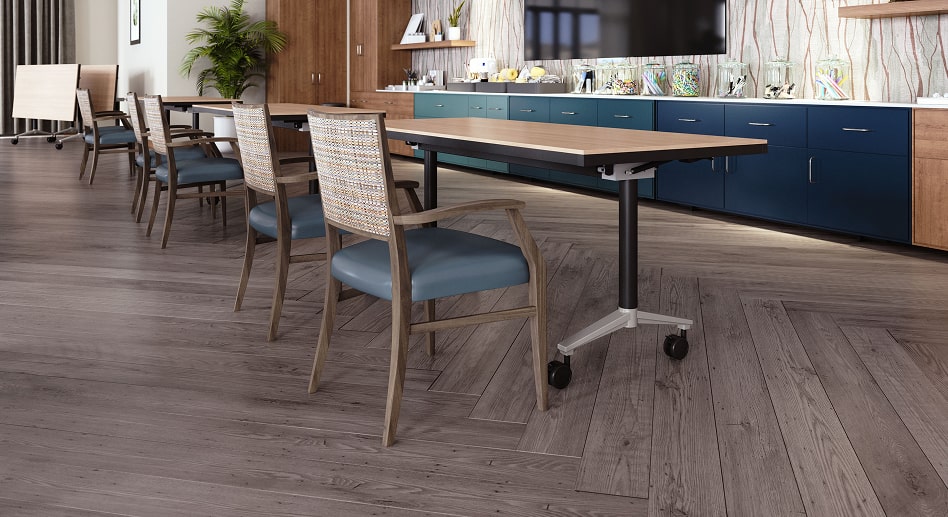
MityLite provides wooden and faux wood chairs uniquely crafted to meet the important demands of senior living facilities. Our American-made chairs represent our long-term commitment to comfort and aesthetics that equally serve the facility’s requirements and the needs of senior citizens.
Facility managers can customize options to fit the decor and design elements of all areas of their facilities, with thousands of fabric and finish options to choose from.
Ready to see how MityLite’s wooden and faux wood chairs can enhance your seniors’ daily comfort and practical needs?
